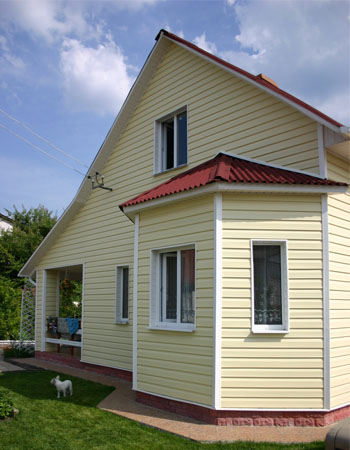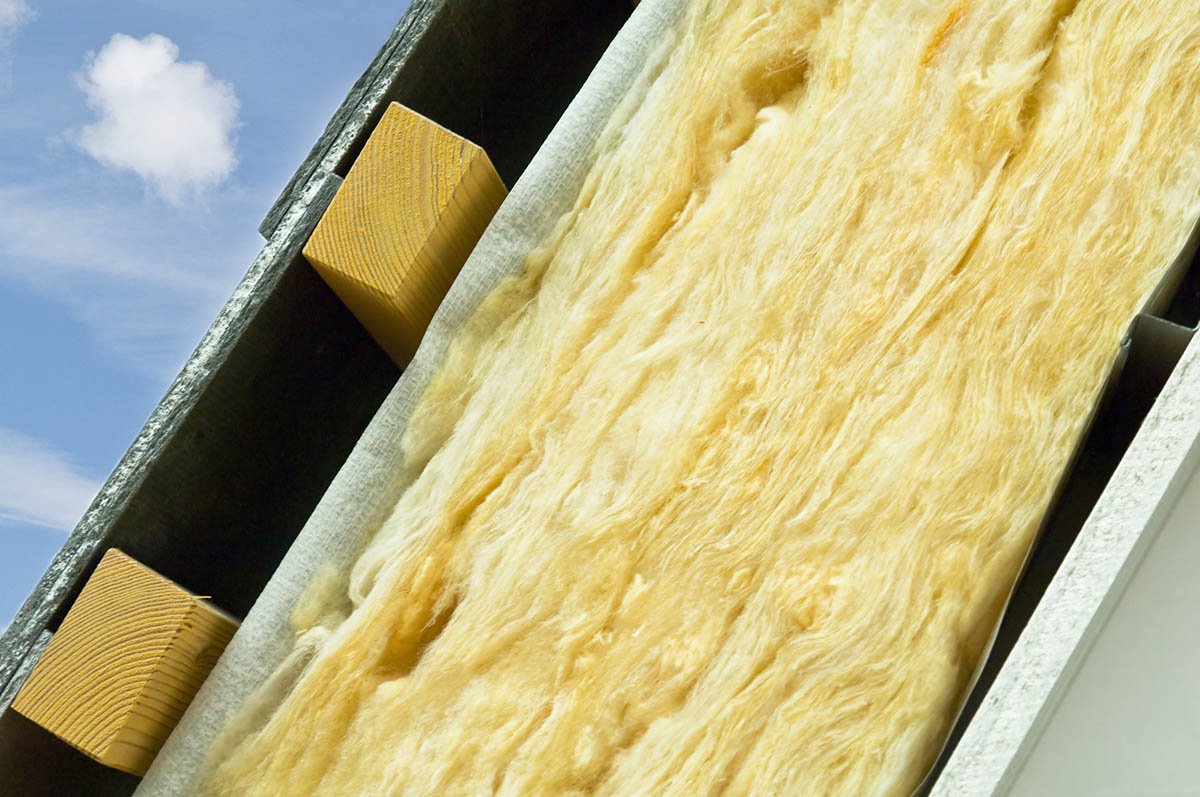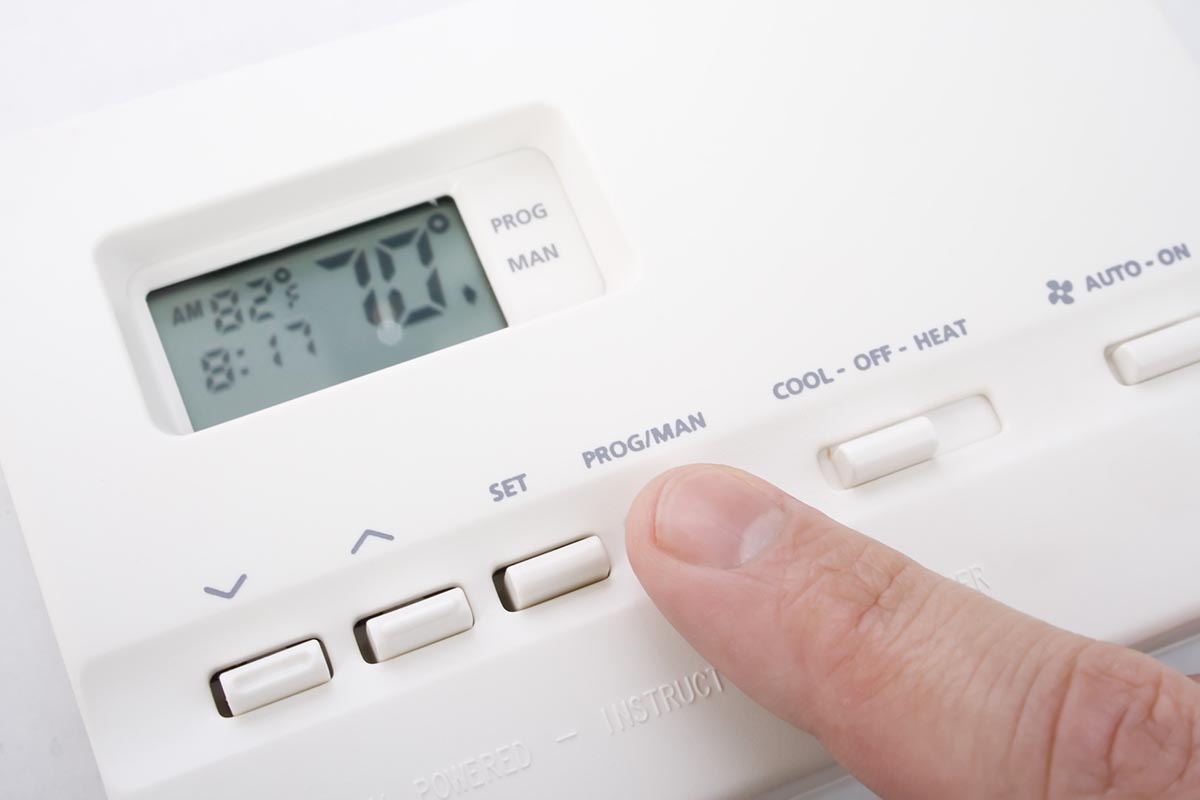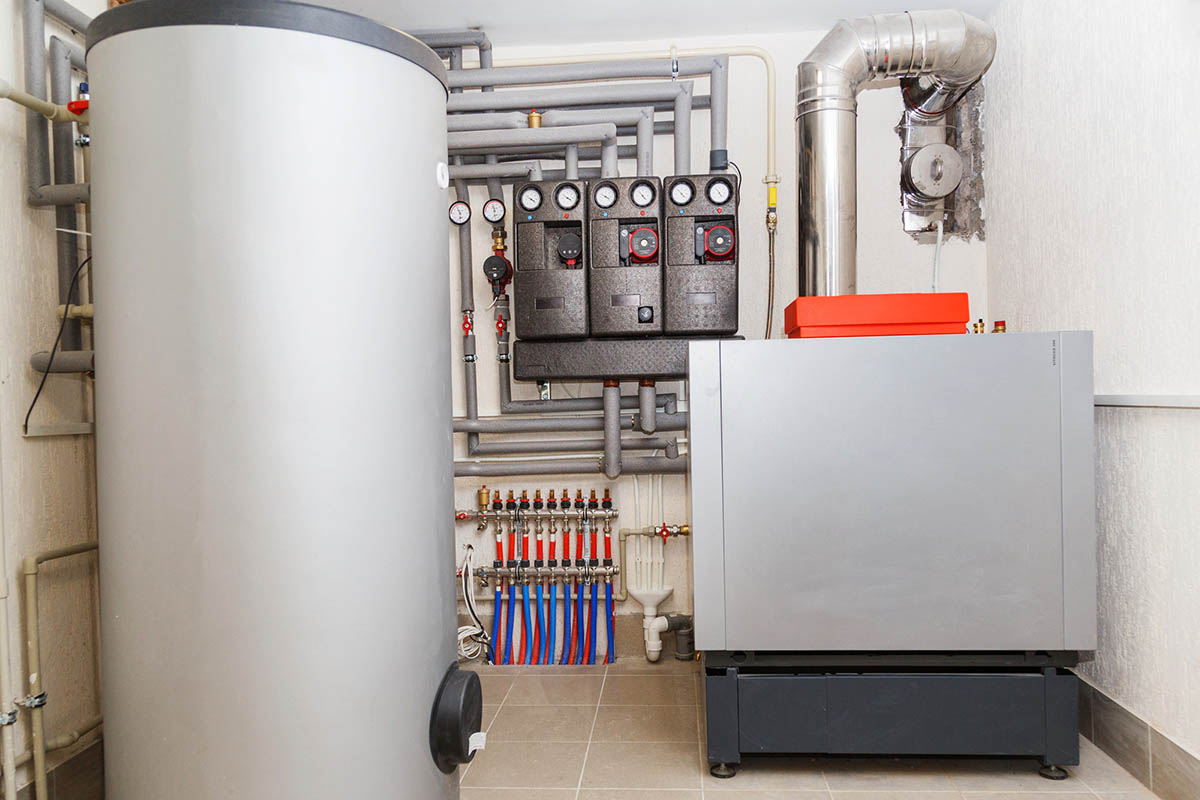We may earn revenue from the products available on this page and participate in affiliate programs. Learn More ›
Q: I’m looking for a new furnace, and I’ve found they come in various sizes and models. What size furnace do I need to heat my home efficiently? How many BTUs do I need?
A: Having the right size furnace is crucial for any house. An efficiently heated home is not only paramount to the occupants’ comfort but also their safety. Especially in colder climates, winter weather can cause pipes to freeze or burst. Additionally, homes that aren’t appropriately heated can quickly run up a homeowner’s bills.
Furnace and boiler capacities are measured in BTUs, or British Thermal Units. This represents the amount of energy necessary to increase the temperature of one pound of water by one degree Fahrenheit. Because home heating needs vary widely, furnaces come in a variety of sizes and BTU ratings. Here’s how to calculate what size of furnace is necessary. Remember that this number will serve as an estimate, and your qualified HVAC installer will be able to determine the exact size and model that’s best for your home.
The home’s size is the most significant factor when determining furnace size.

The most critical factor in determining furnace size is the home’s square footage. This information may be found on the home’s blueprint or closing documents. However, if these numbers aren’t available, simply measure “rectangles” on each floor of the house, multiplying the width by the length for each rectangle. Add up those totals to find the house’s total square footage.
Consider the following examples for a quick frame of reference. A 100- to 200 square-foot room, such as a small home office, will have an average recommendation of 4,000 to 8,000 BTUs. For a space of 800 to 900 square feet, such as a small home or two-bedroom townhouse, the recommendation is between 30,000 and 45,000 BTUs. An average 2,000-square foot home will need between 80,000 and 115,000 BTUs to heat efficiently.
Depending on your climate, you’ll need 30 to 60 BTUs per square foot of the home.
While the home’s overall size is the most significant factor in determining furnace size, climate also plays an important role. Within the United States, the average home will require between 30 to 60 BTUs per square foot, depending on the region’s climate zone heating factor.
A furnace size calculator or heating BTU calculator will use the following formula, which homeowners can quickly calculate to determine how many BTUs per square foot are necessary:
Household Square Footage x Climate Zone Heating Factor = Total BTU Output Needed to Heat the Home Efficiently
There are seven different climate zones, with Zone 1 being the hottest and Zone 7 being the coldest. In Zone 1 (which includes southern Texas and most of Florida), homes will need 30 to 35 BTUs per square foot to heat properly. On the other end of the spectrum, homes in Zone 7 (including northern Wisconsin and most of Maine) will require up to 60 BTUs per square foot. Keep in mind that homes in Zones 1 through 3 might not need a furnace at all and may be able to control the temperature with a heat pump; however, homes in Zones 4 through 7 will typically require the heating power of a furnace.

A home’s insulation can be a determining factor in how large of a furnace you need.
An often-overlooked factor in using a BTU calculator is the home’s insulation. Insulation plays a crucial role in energy efficiency because it helps maintain a house’s existing temperature—in other words, keeping it warm in the winter and cool in the summer. A well-insulated home will yield lower energy bills because the heating and cooling systems do not need to work as hard. Conversely, a poorly insulated space will have air leaks, forcing HVAC systems to push out more air to reach the homeowner’s desired temperature.
Each climate zone has a range of recommended BTUs per square foot. For a newer home with good insulation, use the lower range for the zone. If the home has older or insufficient insulation, using the higher range is recommended. Two-story houses will also require a slightly lower BTU per square foot, as the second floor helps to insulate the space. When in doubt, it’s best to choose a furnace with a higher BTU rating.
Take the home’s age, the number of windows, and the furnace’s efficiency rating into consideration.
In addition to the quality and quantity of insulation, a home’s age and the number of windows can also impact how well it is insulated. Newer homes typically have better and more recently updated insulation, which means fewer potential areas for air escape. Additionally, the more windows a home has, the more likely hot air will slip out. This is especially true for older windows, which may have broken seals or other damage that could cause air leaks.
Another factor to consider is the furnace’s efficiency rating. Furnaces are typically labeled with two key numbers: its input rating in BTUs and an efficiency rating. The latter indicates how effectively the furnace can pump out hot air. Gas furnaces must have at minimum a 78 percent efficiency rating, though high-end gas models can have ratings closer to 97 percent. To determine the actual output of BTUs, multiply the BTU input by the percent efficiency rating. For example, a furnace with 100,000 BTUs and an 80 percent efficiency rating will have an output rating of 80,000 BTUs. Also, keep in mind that a furnace’s efficiency will decrease with time and usage—a unit toward the ends of its lifespan will not have the same output as when it was first purchased.
Some tips to remember for when your new furnace is installed: A furnace that’s regularly maintained will also yield better efficiency over time. A gas furnace should be serviced at least once a year, or ideally in the spring and fall—after and before peak heating usage. Regular maintenance can identify and fix small issues that may become bigger over time and ensure that the furnace is free of blockages or leaks so it runs at peak efficiency. Regular homeowner maintenance, like changing the furnace filter every 3 months, will also keep the furnace running at its best.
A furnace that’s too small can lead to uneven heating and higher bills.
If a home’s furnace is too small, it will not efficiently heat the entire space. Especially in colder climates or on particularly chilly days, the furnace will not keep up with the drop in temperature, often resulting in insufficient or uneven heating. This means that the unit will constantly run (and might not even make a noticeable difference), leading to higher energy bills and more wear and tear on the unit.

A furnace that’s too big can make a home uncomfortable, have a shorter lifespan, and waste energy.
Knowing the issues that can arise from a too-small furnace, homeowners may assume that bigger is better. However, a furnace that is too big comes with its own problems. Since oversized heaters typically work in quick bursts, they may turn on and off frequently, overheating certain areas of the house while leaving others cold. This constant cycling not only wastes energy but can wear out a system more quickly, necessitating more frequent repairs or even replacement.
If your current furnace is too large or too small, consider replacing it or calling a professional to help assess your current HVAC system.
An appropriately-sized furnace will gradually warm up a home, which improves energy efficiency and helps maintain the unit’s lifespan. If homeowners notice issues such as uneven heating and constant running or cycling, the furnace may be too large or too small for the space. Furnaces also have their own lifespans, just like any other household appliance—anywhere from 15 to 30 years. Calling a professional to assess the current HVAC system can help determine whether it’s time to replace the furnace.
When installing a new furnace, it’s not in your best interest to go to the home improvement store and buy the cheapest model to try to save some money. Even if you do the calculations yourself, other factors will affect a furnace’s power and efficiency, including the state of your insulation and ductwork.
The average cost of replacing a furnace is between $2,000 and $7,000. Prices will vary based on size and efficiency, as well as the type of fuel used. Furnaces come in natural gas, electric, and oil models, each requiring different setups and using varying amounts of fuel. An HVAC professional can answer any questions and determine which type and size of furnace are best for the home in question.


